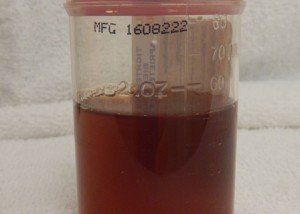
Ever have blue or green urine?
Gee, what causes urine to be green or blue or blue-green?
I asked Dr. Courtenay Moore, MD, urologist in the Glickman Urological & Kidney Institute at Cleveland Clinic, about what can cause your flow to turn blue or green.
Dr. Moore explains: “Certain medications can cause blue urine. For example, IV administration of methylene blue can cause both urine and feces to be discolored in this manner.
“Other medications that can result in blue urine include: Urised, amitriptyline, indomethacin (Indocin), cimetidine (Tagamet), and phenergan.” Another medication is Trac Tabs.
Additional Medications that Can Turn Urine Blue
– Triamterene, a mild diuretic.
– Rinsapin, an antibiotic. This can also cause your excrement to turn green.
– Viagra
– Any other medication that has a blue dye in it.
Additional Causes of Blue Urine
Multivitamins, excess B vitamins, and food dyes. Best bet: avoid eating foods that contain dyes. The body does not need artificial colorings in it.
Medical Problems that Can Cause Blue Urine
– Dr. Moore says, “A medical condition called familial hypercalcemia, also known as blue diaper syndrome, because children with the disorder have blue urine, could also be the source of the discoloration.”
– Another medical condition, called indicanuria, can be a culprit.
– And yet another medical problem is infection by the bacterium called pseudomonas.
Specific Causes of Green Voiding
– Dr. Moore says, “The likely source of green urine is a food source, such as asparagus.”

Freepik.com, timolina
– Additional causes: propofol, an anesthetic;
– According to urinecolors.com, there are no known diseases that would cause green fluid output.
However, according to urology.stanford.edu/about/articles/abnormal_urine.html, green urine can, indeed, be caused by a medical problem: “…caused by bile when there is a fistula between the urinary tract the intestines.”
Nevertheless, the good news is that cancer does not cause green or blue excrement.
Best Way to Monitor Urine Color
Obviously, men can do this more conveniently than women. Women can view the color of their urine on tissue paper after they wipe themselves.
But don’t wait till then, however, especially if the tissue paper is colored or textured. Women can view their fluid-void by observing the voiding action.
Make sure the lighting is adequate and you are positioned in a way that allows a good view.
For best viewing for both men and women, void into a clear plastic cup.

If one is not available, make sure that the toilet bowl is clean and free of any cleaning agents that add color to the toilet bowl water.
Make sure the lighting is adequate.
Should you decide to seek medical consultation, see a urologist.
If your medical plan requires an initial visit with a primary care physician, ask for a referral to a urologist.
A doctor will perform tests to determine any medical causes of color changes.














